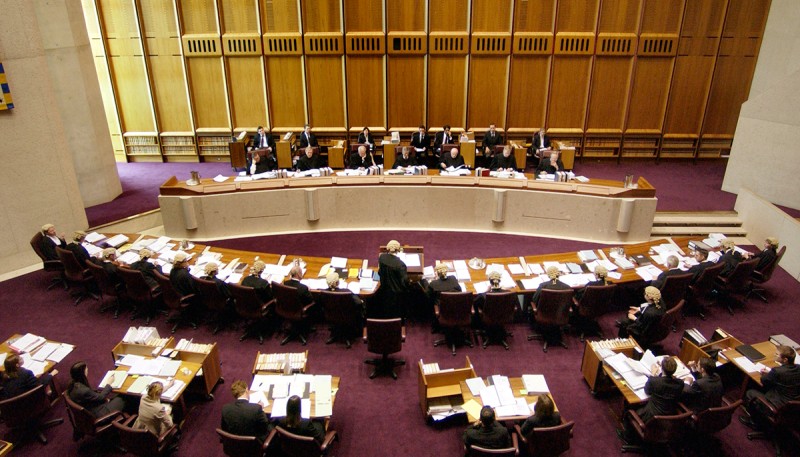Who is more powerful the Governor-General or the High Court? Can the Governor-General over rule the High Court?
Thank you for a very interesting question.
It is not possible to say whether the Governor-General or the High Court of Australia is more powerful as they have different powers and roles.
The Australian Constitution divides the power to make and manage laws between 3 largely separate groups:
- The Parliament (the Legislature)
- The Executive
- The Judiciary (the courts)
The separation of powers is intended to prevent any one group from having unlimited power. Power is shared between the Parliament, the Executive and the Judiciary and each provides checks and balances on each other.
However, Australia does not have a complete separation of powers because some of the roles of the 3 groups overlap. For example, the Prime Minister and ministers are part of the Executive as well as the Parliament.
Significantly, the Governor-General is part of or has a role in all 3 groups:
- The Governor-General is part of the Parliament with the Senate and the House of Representatives.
- The Executive is made up of the Governor-General, Prime Minister and ministers.
- The Judiciary includes justices of the High Court who have been appointed by the Governor-General on the advice of the Executive.
The Governor-General is also the only person who can dismiss a justice of the High Court (section 72(ii) of the Constitution). A justice can only be removed in a case of 'proved misbehaviour or incapacity' by the Governor-General acting on the advice of the Executive and the Australian Parliament.
The High Court of Australia

DPS Auspic
Description
The High Court of Australia in session in the High Court building in Canberra. The High Court interprets and applies Australian law and decides cases about national issues, including challenges related to the Australian Constitution.
In the courtroom, the 7 High Court Justices sit along a large semi-circular desk atop a small raise at the end of the room. The Justices preside over High Court proceedings, interpret laws and decide major legal cases.
In front, facing them, is another curved desk. Here, 18 barristers are sitting, most are wearing robes and wigs. A barrister is a type of lawyer who speaks on behalf of people or organisations in the courtroom. They present arguments and answer questions posed by the Justices.
Permission should be sought from DPS AUSPIC for third-party or commercial uses of this image. To contact DPS AUSPIC email: auspic@aph.gov.au or phone: 02 6277 3342.